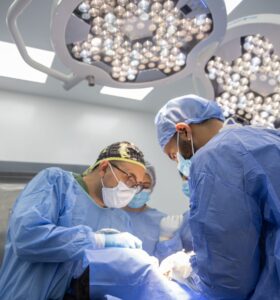How RWC Academy Helps You Master upper jaw implant Skills In 2025
When you start learning about upper jaw implant procedures at RWC Academy, you get to see just how important 3D imaging is. Using CBCT scans, you can check the bone thickness and spot the sinus before you even touch a patient. This step is essential for planning any upper jaw implant. It’s the kind of habit that saves you from surprises later on.

Hands-On Bone Expansion for upper jaw implant Stability
At RWC, you actually use osteotomes on models to practice expanding soft bone. This is a real game-changer for upper jaw implant stability, especially since the upper bone is usually softer than the lower. You get a feel for how much pressure to use. With time, this skill becomes second nature.
Practicing with Special Burs for upper jaw implant Prep
During the course, you’ll try out osseodensification burs, which are different from regular drills. These burs help compact the bone around the upper jaw implant site. It’s a simple step, but it makes a big difference in how well the implant holds. You’ll notice the improvement right away.
Learning Sinus Lift Techniques for upper jaw implant Support
One of the trickiest parts of upper jaw implant surgery is the sinus lift. At RWC, you practice this on models before ever doing it for real. You learn how to gently lift the membrane and add bone graft. This skill opens the door to treating patients who don’t have enough bone for an upper jaw implant.
Trying Bone Grafting Methods for upper jaw implant Success
Bone grafting is a must for many upper jaw implant cases. At RWC, you mix and place grafts yourself, not just watch someone else do it. You see how different materials behave and what works best for thin bones. This hands-on experience makes you much more confident when you’re with a patient.
Choosing the Right Implant for each upper jaw implant Situation
Not every upper jaw implant case is the same. Sometimes you need a shorter or wider implant, depending on the bone. RWC Academy helps you figure out which type to use and why. You’ll go through real cases and talk through the options with your instructors.
Knowing When to Place the upper jaw implant
It’s tempting to rush, but waiting for the bone graft to heal is key. At RWC, you learn how to check the healing and know when it’s safe to place an upper jaw implant. This patience pays off with better results and fewer problems down the road.
Protecting the Bone During upper jaw implant Surgery
Heat can damage bone, so you need to drill slowly and keep things cool. RWC Academy makes you practice this over and over until you get it right. You’ll see how careful drilling helps the upper jaw implant fuse with the bone and heal well.
Exploring Zygomatic Implants for Tough upper jaw implant Cases
Some patients just don’t have enough bone for a standard upper jaw implant. That’s where zygomatic implants come in. At RWC, you use models to practice placing these longer implants into the cheekbone. It’s a challenging skill, but it gives you more options for treating difficult cases.
Waiting for Healing Before Loading the upper jaw implant
Placing a crown too soon can ruin all your hard work. RWC Academy teaches you to wait for the upper jaw implant to fully integrate before adding the tooth. You’ll learn how to explain this to patients and why it matters for long-term success.
Following Up After upper jaw implant Placement
Your job isn’t done when the implant is in. RWC shows you how to monitor healing with X rays and regular checkups. You’ll learn what to look for and when to act if something’s not right. This careful follow-up helps you catch problems early and keeps your patients smiling.
Why RWC Academy Makes upper jaw implant Training Real
What sets RWC Academy apart is the way you actually do the work yourself. You don’t just watch you get your hands on every step, from scans to surgery. The instructors are dentists who’ve seen it all, and they share the little tips that make upper jaw implant cases go smoothly. If you want to feel ready and confident with upper jaw implant procedures, this is the place to learn. You can check our latest article about dental implants live surgeries, and dental implant courses, or follow us on LinkedIn




